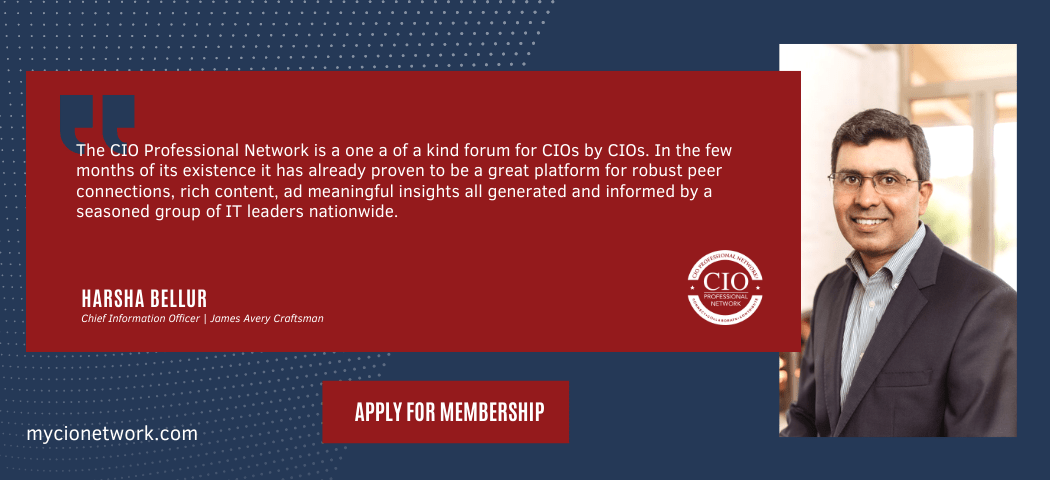The National CIO Review (TNCR) was in full force at the 2024 Gartner IT Symposium in Orlando, delivering real-time, exclusive, on-the-ground coverage of the event for our 50,000 readers.
While many of the industry’s older publications were notably absent from the media room, your TNCR Crew brought a fresh approach to the event, providing CIOs and technology leaders, actionable insights from the event floor.
Our commitment to education-first, crowd-funded journalism, supported by our premium subscribers, allowed for this in-depth, firsthand reporting from industry-leading keynotes, panels, and discussions with top thought leaders. (Thank you!)
In an era when many traditional tech publications are downsizing, TNCR’s presence underscores our continued dedication to actively curating meaningful, actionable insights for you, our reader. Remember, this is not your father’s CIO Magazine. ????
Here for your reading pleasure, we recap our full coverage of the event:
Winning the Race to AI Value
Gartner’s keynote on AI strategy urged CIOs to align adoption with specific business goals. Two AI adoption models were proposed: steady implementation for stable growth and accelerated adoption for competitive edge.

TNCR’s coverage emphasized the importance of focusing on value-driven outcomes rather than chasing trends, ensuring that AI investments directly impact core business functions. The approach presented a balanced path for CIOs to leverage AI with both speed and precision, making AI a catalyst for real transformation without sacrificing sustainability.
Read more: Gartner IT Symposium 2024 Keynote: How CIOs Can Win the Race to AI Value
Driving AI Conversations in the Boardroom
One of the critical challenges for CIOs is presenting AI initiatives effectively to the board. Gartner introduced the B.O.A.R.D. framework, brief, open, accurate, relevant, and diplomatic, to help CIOs convey the strategic potential of AI while addressing risks, costs, and timelines realistically.

TNCR reported that with this approach, CIOs can simplify complex AI concepts into clear, actionable strategies that align with executive priorities. This balanced communication style helps ensure board support by making AI’s potential and impact accessible to non-technical stakeholders, positioning AI as a vital business investment.
Read more: Driving AI Results: How CIOs Can Guide Boardroom Discussions
Key Priorities for CIOs in 2025
As the role of the CIO continues to evolve, Gartner analysts shared key priorities for 2025 that focus on collaboration and strategic alignment.

CIOs were advised to prioritize high-impact areas like cybersecurity, data analytics, and modernizing legacy systems. The goal is for IT to become a core driver of business strategy, moving beyond a support function to a strategic partner for the C-suite.
TNCR’s report highlights the value of creating cross-functional “Digital Vanguard” teams—multi-disciplinary groups aimed at integrating technology across departments for broader, organization-wide impact.
Read more: LIVE from Gartner IT Symposium: Key Priorities for CIOs in 2025
Mid-Size CIOs: Fueling Innovation with Limited Resources
Mid-size companies often face unique challenges in technology adoption due to budget constraints. Gartner analyst Joseph Provenza outlined strategic approaches for mid-size CIOs to drive growth by prioritizing scalable, high-impact initiatives.

TNCR reported that Provenza emphasized leveraging AI-driven insights and focusing on essential system upgrades that provide quick wins without overextending resources.
By carefully choosing initiatives that align closely with growth goals, mid-sized organizations can foster innovation and remain competitive, even without the extensive budgets of larger enterprises.
Read more: LIVE from Gartner IT Symposium: How Mid-Size CIOs Can Create Growth and Innovation
Nvidia’s Jensen Huang on AI’s Industrial Revolution
Nvidia CEO Jensen Huang presented a transformative vision of AI, likening its potential impact to that of the Industrial Revolution.

In TNCR’s exclusive coverage, Huang encouraged CIOs to treat AI as a revolutionary asset, one that can drive productivity across all business functions, from R&D and operations to customer service.
He underscored that AI’s role should transcend operational efficiency and instead be seen as a core enabler of innovation. Huang’s call to action emphasized adopting AI boldly and strategically to gain a competitive advantage, positioning it as essential to a forward-thinking business strategy.
Leadership Insights from Industry Experts
Leadership development was a key theme, with Adam Grant and Mallory Weggemann offering valuable perspectives on resilience and open-mindedness.

As TNCR reported, Grant’s “confident humility” approach encourages leaders to foster open dialogue and value constructive criticism—an essential mindset for encouraging innovation and growth within teams. Weggemann’s focus on resilience underscored the importance of consistent, small steps in navigating personal and professional challenges, an invaluable strategy for today’s technology leaders.
These insights equip CIOs with practical tools to cultivate agile, adaptive teams capable of handling the demands of a rapidly changing environment.
The Rise of Agentic AI
Agentic AI represents an evolution from traditional predictive models to AI systems that can make autonomous decisions in real time, adapting to rapidly changing conditions.

TNCR’s coverage underscored that this shift enables companies to enhance their operational agility, respond to market needs more effectively, and improve customer engagement.
CIOs are encouraged to explore agentic AI as a strategic asset, one that brings the flexibility and responsiveness essential for a competitive edge. This new AI paradigm positions AI as a foundational tool in decision-making, creating efficiencies and driving growth.
Read more: LIVE from Gartner IT Symposium: The Rise of Agentic AI







